Choose the Best Sustainable Cosmetic Packaging
The internet and social media have significantly transformed the cosmetics industry. Prominent investors, celebrities, and online influencers now promote branded cosmetics and personal care products, opening up new avenues to connect with consumers. In 2022, the beauty market, which consists of skincare, fragrance, makeup, and haircare, generated approximately $430 billion in revenue. Today, all of the categories are continuing to trend upwards. After a strong recovery from the COVID-19 pandemic, the beauty market is expected to reach an estimated $580 billion by 2027.
With the beauty product market being so large, the industry also faces an issue in controlling waste. The beauty industry creates roughly 120 billion plastic packaging units annually while being responsible for approximately one-third of landfill waste. As a result, businesses are looking for sustainable cosmetic packaging alternatives.
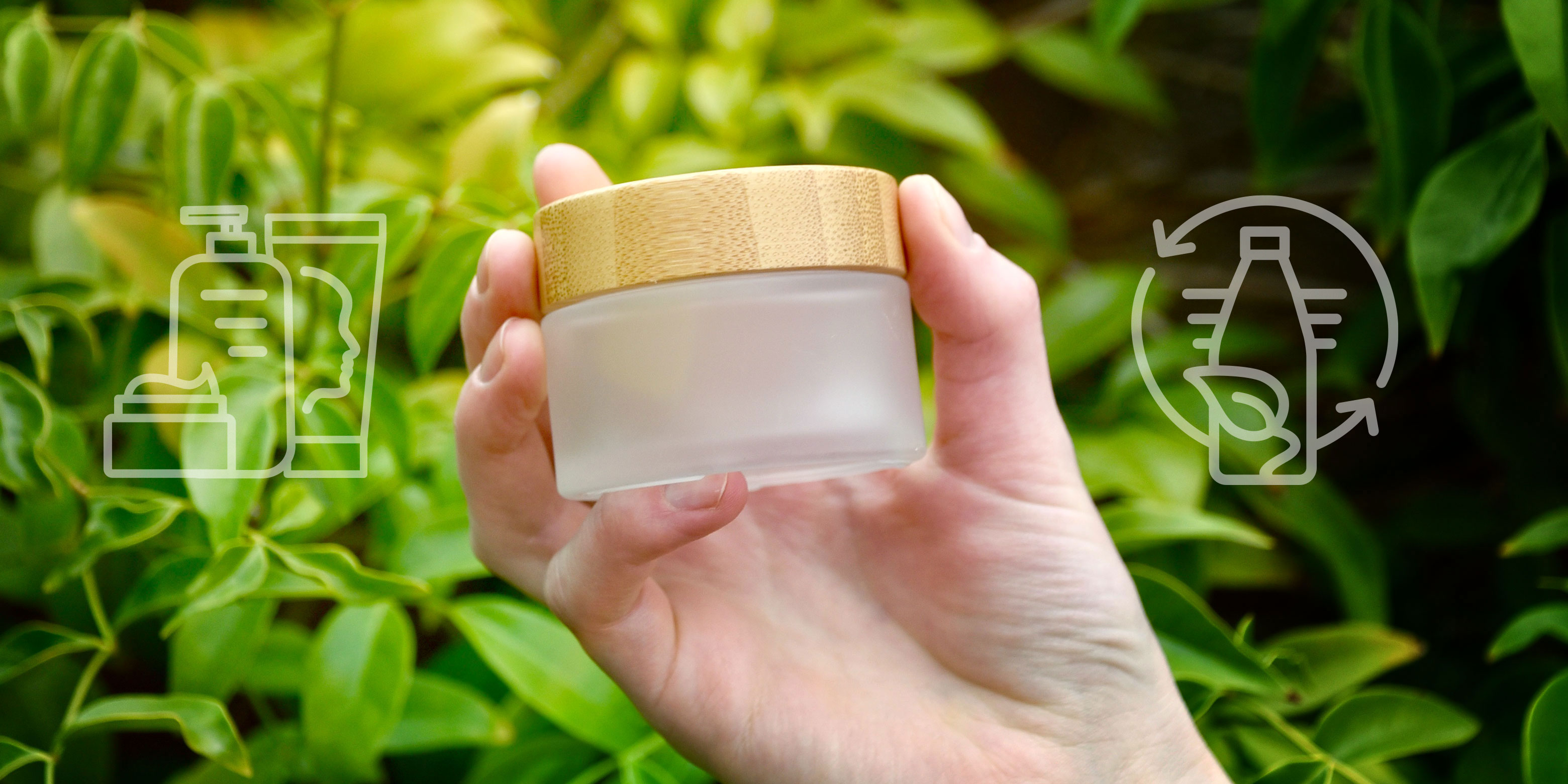
Importance of Sustainability in the Cosmetics Industry
The production of billions of plastic items that end up in the environment has severe consequences. Over 18 million acres of forest are lost due to excessive plastic packaging production. Furthermore, the energy and water consumption during the manufacturing process put a significant strain on the environment. Preserving the world for future generations requires reducing resource consumption while limiting waste in landfills and water sources.
Interestingly, consumers in the beauty industry want sustainable cosmetic containers. A whopping 76% of people prefer recyclable materials and reusable or refillable packaging. Recent research also indicates that 51% of beauty product buyers choose personal care products with eco-friendly packaging.
Given that more than half of consumers seek sustainable solutions and base their purchasing decisions on companies embracing sustainability, more businesses may consider transitioning to custom eco-friendly cosmetic packaging and products.
Sustainable Cosmetic Packaging Performance Considerations
There are several factors to consider to ensure the quality and performance of your sustainable beauty packaging.
Durability and Protection
- Ensure the packaging can withstand shipping and handling without damage to the product.
- Choose raw materials that are strong and durable, such as glass, metal, post-consumer resin (PCR), or bio-based materials.
- Consider using materials to protect the product so there is minimal impact during transit and storage.
- Design packaging to be stackable and stable to prevent crushing.
- Test the packaging to ensure it meets durability standards.
Barrier Properties
- Select materials that prevent oxygen, moisture, and other contaminants from getting in.
- Consider using barrier coatings or laminates to enhance the packaging’s barrier properties.
- Test the packaging to ensure it meets barrier requirements.
Compatibility with Product Formulas
- Choose materials that are compatible with the product’s ingredients.
- Avoid using materials that could react with the product or compromise its stability.
- Test the packaging with the product to ensure there are no adverse interactions.
Cost Comparisons of Sustainable vs. Traditional Materials
Sustainable packaging materials can offer several cost benefits over traditional materials, including:
- Reduced waste disposal fees: Sustainable packaging materials, such as glass and metal, can be recycled or reused, reducing the amount of waste sent to landfills and incinerators. This can result in cost savings for businesses in terms of waste disposal fees.
- Enhanced brand reputation attracting eco-conscious consumers: Consumer demand for sustainable products and packaging continues to increase year after year. By using sustainable packaging materials, businesses can appeal to these consumers and enhance their brand reputation, leading to increased sales and customer loyalty.
- Improved supply chain efficiency through responsible sourcing: Sustainable packaging materials are often sourced from renewable or recycled materials. This can help businesses improve their supply chain efficiency and reduce their environmental impact.
By utilizing sustainable packaging solutions, businesses can appeal to environmentally conscious consumers and optimize their supply chain processes, ultimately leading to increased cost savings and improved overall sustainability.
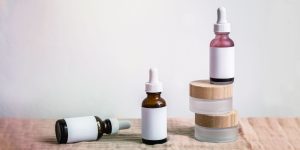
Sustainable & Eco-Friendly Cosmetic Packaging Options
Sustainable and eco-friendly packaging options can vary widely depending on the product. Here we’ll explore some of the most common types of materials in terms of sustainable packaging.
Glass Packaging
Sustainable skincare containers made from glass offer various options for packaging dry, liquid, and semi-liquid products. These containers come in different sizes and shapes, allowing companies to provide sustainable solutions that cater to diverse product needs. For instance, wide-mouth jars are ideal for applying skin lotions, creams, and other beauty products directly to the skin. Glass containers with metal roller balls are suitable for skin applications, while glass dropper containers are perfect for administering perfumes and diluted essential oils.
Glass containers and packaging stand out for their sustainability attributes. They are 100% recyclable as well as easily reusable and refillable. Glass does not absorb the product inside, enabling complete cleaning without residual residue or odor. While glass can be fragile and prone to breakage, its transparency allows for showcasing the product itself, and the heavier weight evokes a sense of luxury, adding to the customer appeal. This sustainable cosmetic packaging solution not only preserves the product’s quality but also serves as a marketing tool by highlighting the product’s features.

Metal Packaging
Metal containers offer several advantages similar to glass. As a more durable alternative, metal materials are also 100% recyclable. They can be repeatedly processed without compromising their durability or strength. Metal packaging is suitable for a wide range of beauty products, including waxes, lotions, creams, and balms. These containers come in various sizes with round openings for easy application.
Unlike glass, metal materials do not allow consumers to see the product inside, but they provide diverse decorating options. During processing, colors can be added to differentiate metal containers based on the products offered, especially if a business has multiple skincare lines. Additionally, labels and graphics can be applied to the container’s exterior for further customization.
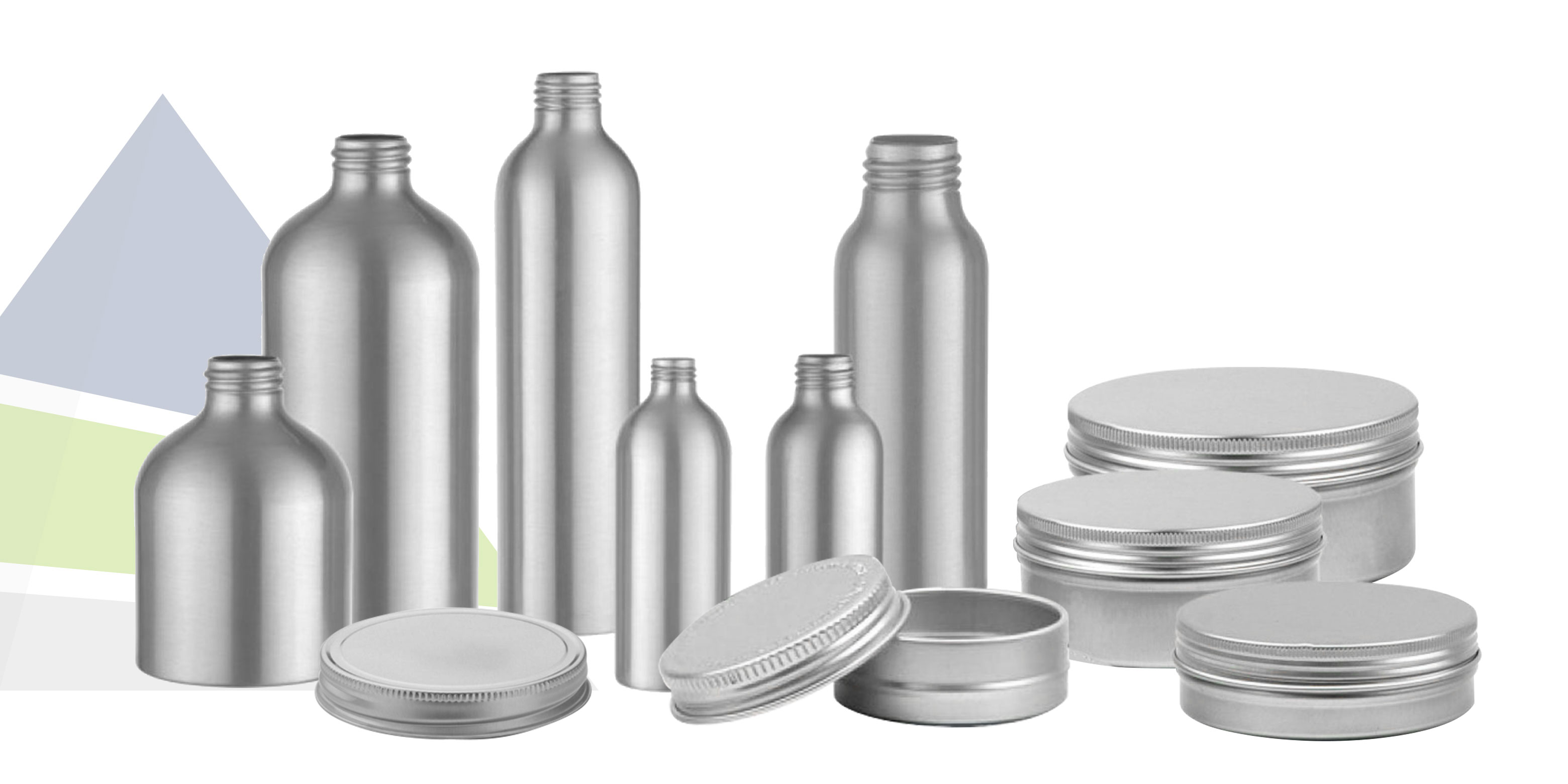
Fiber Packaging
Many cosmetics and beauty products use more durable containers, such as metal, glass, and recycled plastics. These containers protect the product, but additional packaging may be needed for shipping purposes.
Fiber is another sustainable option for skincare packaging. It is lightweight, durable, and cost-efficient, making it popular with personal care businesses. Fiber packaging can be made from recycled paper or natural materials like wood pulp, bamboo, and wheat straw.
Paper packaging for cosmetics and bamboo cosmetic packaging is created by layering materials together. This layering process increases the strength and durability of the container and packaging. Fiber packaging is typically used for dry materials like powders, deodorants, and lip balms. It is 100% recyclable and allows for flexible decoration designs for branding purposes.
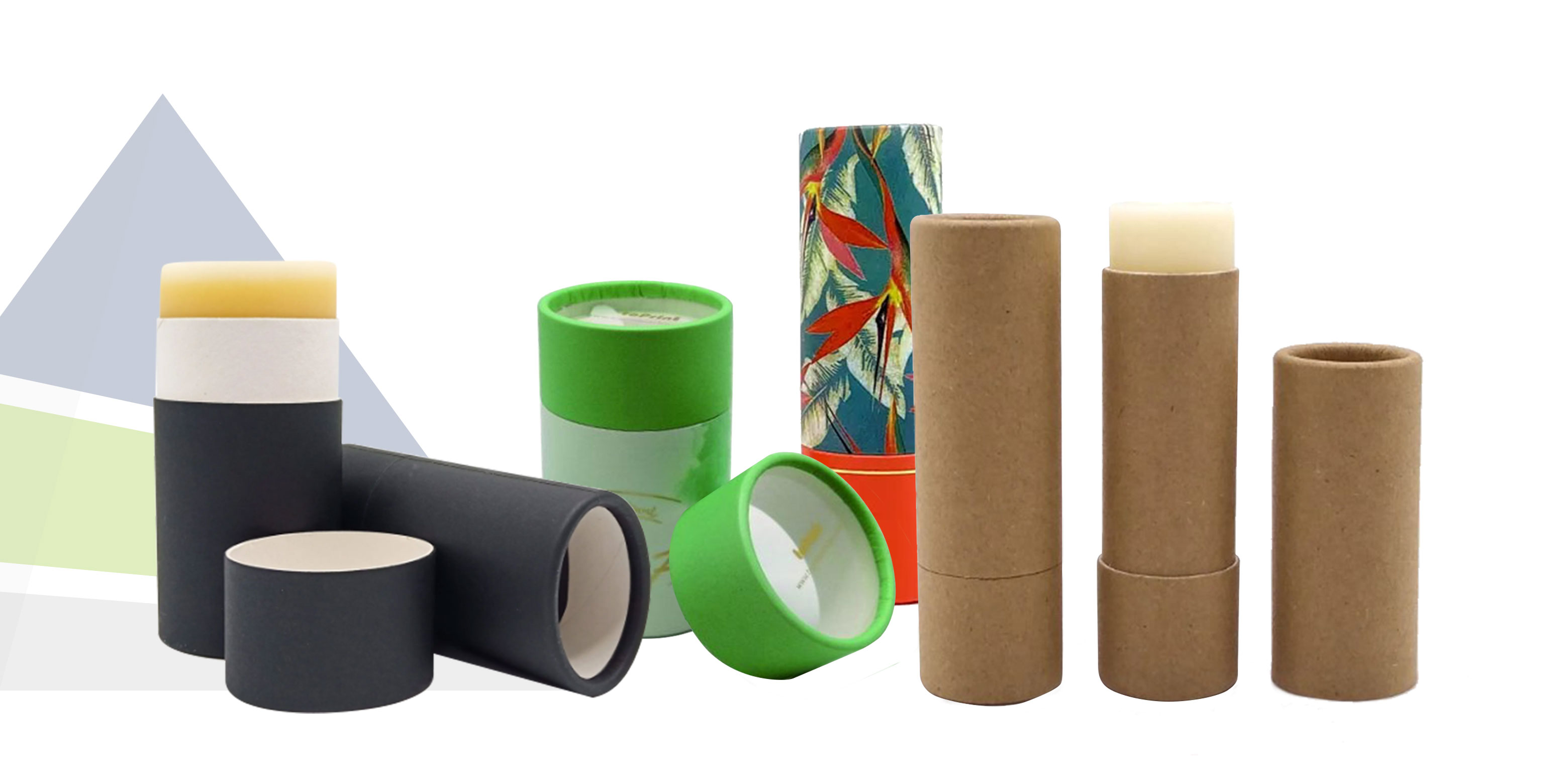
Biodegradable Plastics
Biodegradable packaging has become more popular in recent years and is especially desirable for its sustainability.
Biodegradable plastics otherwise known as bioplastics have emerged as a potential alternative to traditional plastics in the personal care and cosmetic packaging industry. These bioplastics are derived from renewable resources like plants and provide an environmentally friendly solution to address concerns about the use of fossil fuels. By adopting biodegradable packaging, personal care and cosmetic brands can showcase their commitment to sustainability, attract eco-conscious consumers, and contribute to a circular economy.
Compostable Packaging
Compostable packaging presents another sustainable alternative to traditional plastic packaging. Like biodegradable packaging, compostable packaging is derived from renewable plant-based resources. Compostable packaging naturally decomposes over time, but it often requires a specific environment such as a composting facility to fully breakdown.
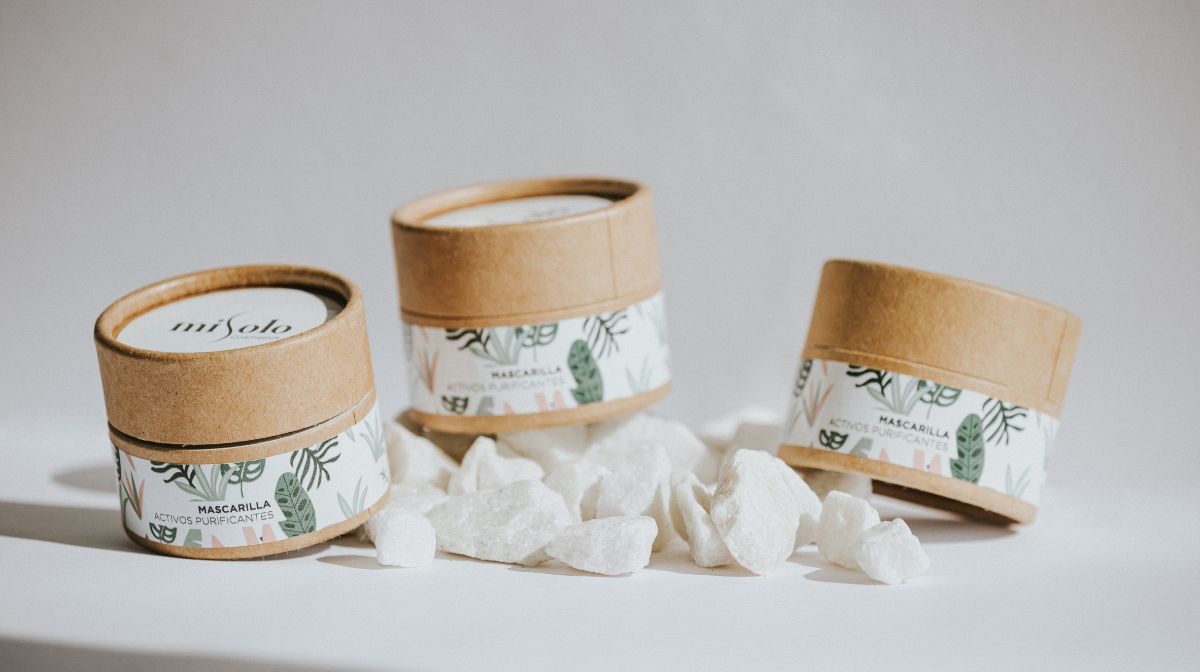
Refillable & Reusable Packaging
Refillable and reusable packaging offers an eco-friendly alternative to single-use packaging for personal care and cosmetic products. It allows consumers to refill their empty containers with product, thereby reducing waste and eliminating the need for new packaging materials.
This type of packaging can be made from various materials such as glass, metal, or durable plastics and designed for easy cleaning and multiple reuse. Refillable containers are gaining popularity. For example, if you were to purchase a refillable product your initial product purchase may include both the product and the storage container, but subsequent purchases will come in disposable packaging intended to be transferred into the refillable container, minimizing waste and promoting sustainability.
By reducing waste, refillable and reusable packaging not only benefits the environment but also promotes a circular economy where products and materials remain in use for extended periods, minimizing the demand for new resources and materials.
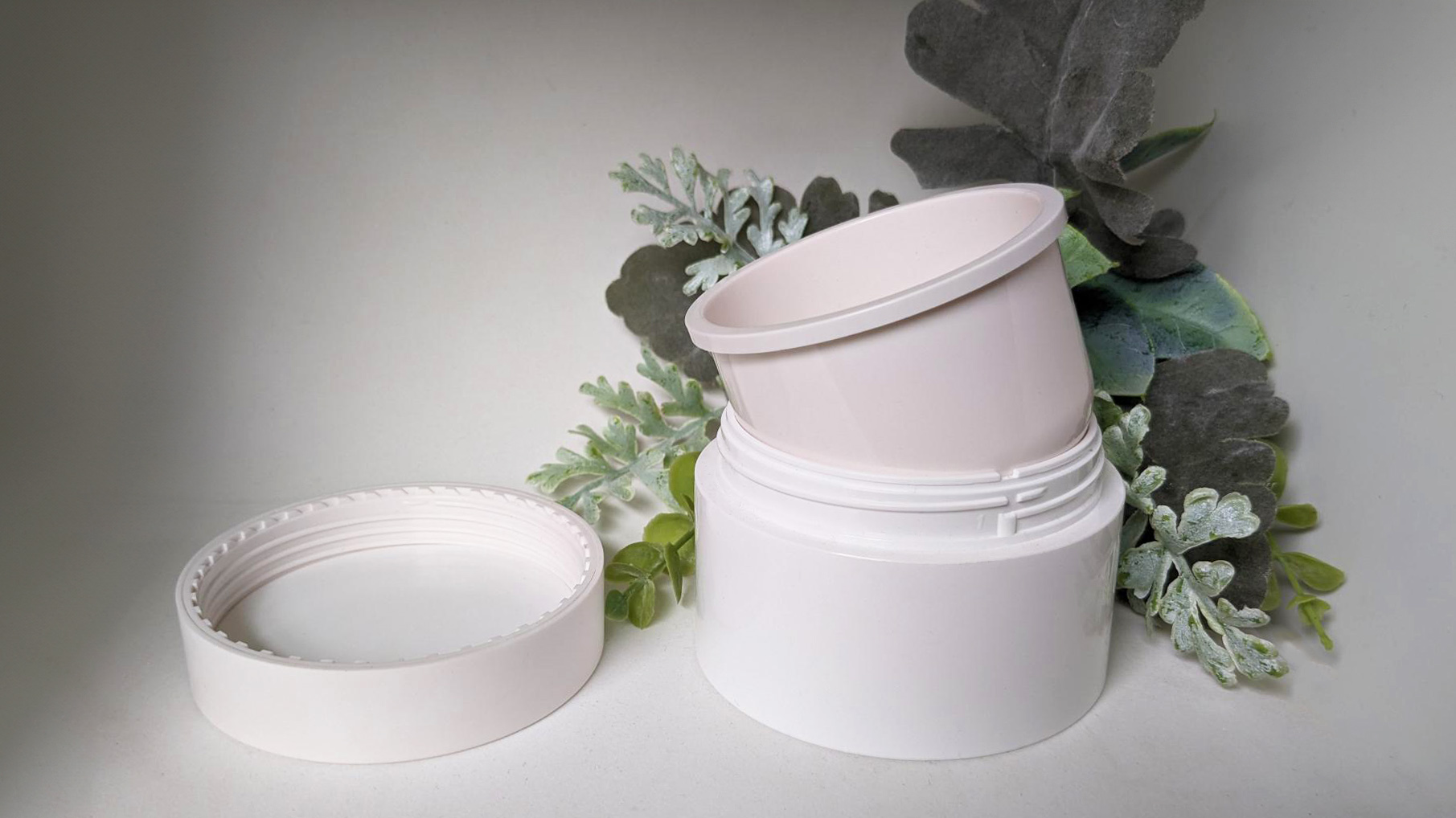
How to Design for Sustainability
In order to design personal care and cosmetic packaging for sustainability, you’ll want to take into consideration several key factors.
Optimize Packaging for Efficient Use of Materials
Optimizing packaging for the efficient use of materials involves focusing on lightweight designs and right-sizing containers. Lightweight packaging reduces the amount of material used while still providing adequate protection for the product. Right-sizing containers ensures that there is no excess packaging material, eliminating wasted space and minimizing the overall environmental impact. By implementing these strategies, businesses can significantly reduce the amount of materials used in their packaging, resulting in cost savings, reduced waste, and a more sustainable supply chain.
Promote Recyclability
Promoting recyclability in personal care and cosmetic product packaging involves designing packaging that is easy for consumers to recycle. This can be achieved by using materials that are widely accepted by recycling programs, such as aluminum, glass, and certain types of plastic. If you require the use of plastic, utilizing PCR packaging for your products is the way to go.
Another way to help the consumer understand what to do with the product packaging after use is to clearly label packaging with recycling instructions, including what materials are recyclable and how to properly sort them. Additionally, working with recycling organizations and promoting recycling initiatives can help increase awareness and participation in recycling programs, further supporting the circular economy and reducing the environmental impact of packaging waste.
Transparency and Communication
Transparency and communication play a crucial role in personal care and cosmetics packaging. As mentioned above, clearly labeling packaging with recycling instructions and end-of-life information empowers consumers to make informed choices about their waste disposal. This transparency helps ensure that packaging is disposed of properly, reducing the amount of waste that ends up in landfills and oceans. Communicating sustainability efforts and initiatives to consumers can help build trust and loyalty, as it demonstrates the brand’s commitment to environmental responsibility.
Use Life Cycle Analysis to Assess the Impact of Packaging Options
The Life Cycle Assessment (LCA) is a tool used to evaluate the environmental impact of a product or process throughout its entire life cycle, from raw material extraction to end-of-life disposal. In the context of personal care and cosmetic packaging, LCA can be used to assess the environmental impact of different packaging options, considering factors such as resource consumption, energy use, greenhouse gas emissions, and waste generation. By conducting an LCA, businesses can identify opportunities to reduce the environmental footprint of their packaging and make more sustainable choices.
Select the Right Sustainable Packaging Partner to Work With
There are many considerations for companies who are looking for sustainable cosmetic containers and packaging. Here at Paramount Global, we offer integrated packaging and supply solutions for companies looking to make sustainable manufacturing operations. Our supply chain solutions include sustainable beauty and skincare packaging made from materials such as metal, glass, fiber, and plastic resins. Our company offers both stock containers as well as custom containers and packaging for products that require special sizes and dimensions.

Start Making Sustainable Packaging a Priority for Your Cosmetics Packaging
To be competitive in today’s market, making sustainability a priority will play a key role in the success of your business. As we covered here, there are many factors to consider when it comes to sustainable cosmetic packaging.
Paramount Global has been providing full-service packaging and supply chain solutions since 1976. We offer global product sourcing, inventory management, and logistical strategies for a cost-effective end-to-end supply chain service. Our company can design, source, warehouse, and distribute sustainable containers and packaging for your cosmetic products.
As more people are getting into the cosmetics market, seeking out sustainable packaging solutions allows them to be competitive in this growing industry while pleasing consumers. Contact us today to learn more about our packaging solutions and discover how we can be a partner to you.
This article was originally published on June 16, 2022 and updated on September 5, 2024.
Hayley is a marketing professional and copywriter with a background in crafting content for a diverse range of industries. She has been writing about packaging and supply chain logistics for Paramount Global since 2022. She specializes in explaining complex topics in a clear and engaging way and is an advocate for sustainability in packaging and supply chain management.
For over forty years, Paramount has been delivering perfectly integrated packaging and supply chain solutions.
